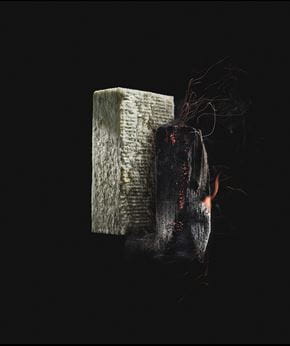Fires cause enormous human suffering and result in significant material damages. In Europe, approximately 4,000 people die in fires each year and 190 are admitted into hospitals with severe burns every day. The annual financial damages reach up to EUR 126 billion.
The vast majority, approximately 95 %, of the fires occur in residential buildings. The causes are often a result of carelessness, accidents and various faults, misuse or incorrect installation of electrical devices.
Although a lot of good progress in fire safety has been made in Europe, it is still difficult to completely eliminate building fires – this is unfortunately ensured by human errors, carelessness and negligence. Ensuring fire safety in buildings is an important way to reduce the most tragic outcomes of fires.
Time is a critical factor when a fire starts

There is usually a very limited amount of time to safely escape the building once a fire has started. Therefore, detecting the fire as early as possible is literally a matter of life and death. In addition to fire detectors, more life-saving time to escape a burning room is achieved by using the correct material choices.
The best fire protection is provided by non-combustible building materials that also protect other materials from burning. Toxic combustion gases are often fatal in a fire, so the safest materials are those non-combustible materials that do not emit hazardous gases.
Fire-proof materials can save lives
So how do you know what materials are safe in a fire? A uniform European classification is used for classifying the fire safety of building materials: A1, A2, B, C, D, E and F where A1 indicates a non-combustible material and F is a material with undetermined fire properties. Smoke propagation and flaming droplets and particles are further defined using the ‘s’ and ‘d’ classes for materials classified as A2, B, C and D.
Insulations can significantly increase the fire load of a building and the choice of insulation can thus remarkably affect the overall fire safety of a building. The safest solution for all types of buildings is an insulation material classified as A1 or A2-s1, d0. Stone wool is classified in the highest classification, A1, which means it is a non-combustible insulation that does not contribute to the growth of fire, prevents the fire from spreading, and protects the structures during fire which significantly increases the fire resistance time of supporting structures and fire separations.
We are responsible for our own fire safety
The primary responsibility for preventing fires and ensuring our personal safety and the safety of the surroundings lies with ourselves. Here are a few tips that all of us can do to ensure the safety of ourselves and our loved ones:
1. Prevent
2. Be prepared for a fire
3. Do the following in the event of a fire
We can all contribute to preventing fires and minimising damages when they do occur – so let's do it!

Tero Virrantuomi
Product & Program Manager
PAROC